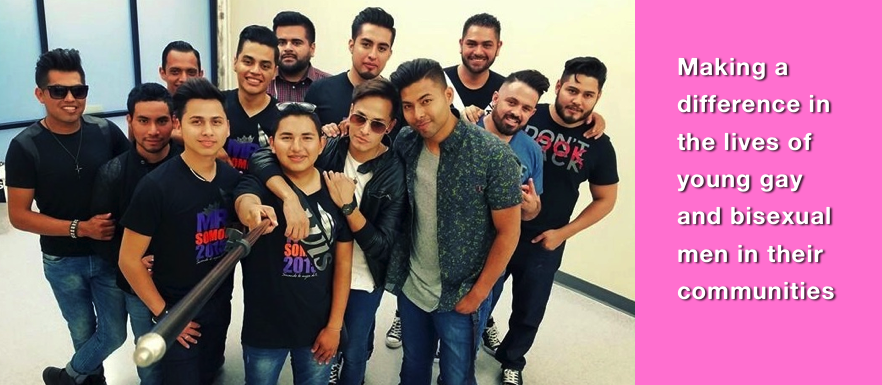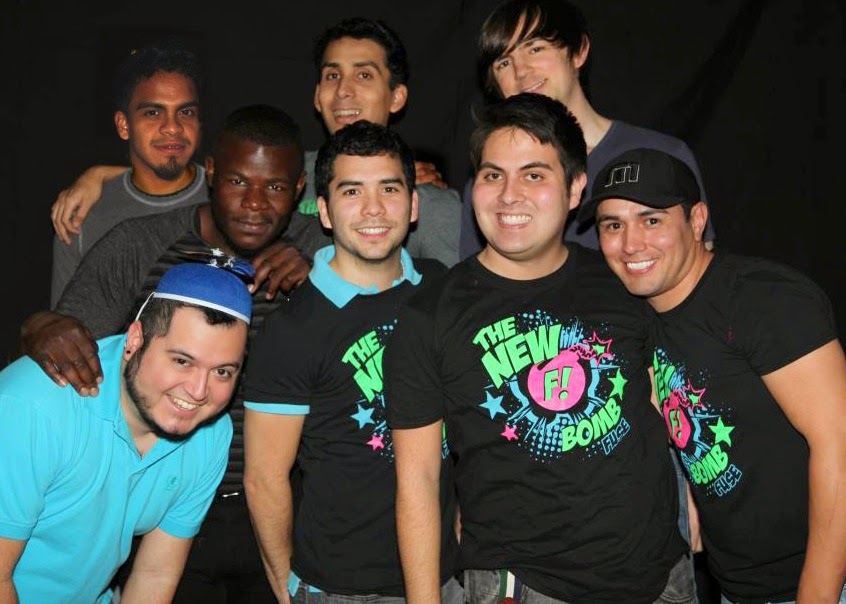In order to have an Mpowerment Project
that can reach broadly into diverse segments of the young gay/bisexual men’s community,
it is important that the Core Group’s composition reflects the Project’s target population. An
effective Core Group should strive to include many men from each
of the major segments of young gay/bisexual men that exist in the
community.
Here are a few organizing best practices from Mpowerment YVR Vancouver BC.
In order to have an Mpowerment Project
that can reach broadly into diverse segments of the young gay/bisexual men’s community,
it is important that the Core Group’s composition reflects the Project’s target population. An
effective Core Group should strive to include many men from each
of the major segments of young gay/bisexual men that exist in the
community.
Here are a few organizing best practices from Mpowerment YVR Vancouver BC.
Here are a few organizing best practices from Mpowerment YVR Vancouver BC.
MpowermentYVR website | MpowermentYVR on Facebook | @MpowermentYVR. Mpowerment YVR is a Program of YouthCO.
Recruitment and evaluation: Interested Core Group (CG) members fill out an application form and schedule a meeting with the YVR coordinators for a introductory 20-minute session. During the session they review the application together and talk about volunteer opportunities with YVR. This session is an opportunity to have both the CG member and the coordinators be on the same page. At this meeting, they might be assigned a team (see below). Together they set participation goals for the next three months. After three months a “3-month” evaluation form is filled out and a evaluation session is scheduled with the YVR coordinators.
The YVR Core Group (CG) meets once a week. The coordinators construct an agenda for the CG members to review. The agenda is sent out to Core members on a Friday. By Monday Core members can review the agenda and let the coordinators know if they will be attending the Core Group meeting.
 |
| Advertise your Core Group |
Core Group Agenda: The agenda basic structure opens with a check-in and group energizer. Next is a weekly health promotional segment (this changes each week and has included topics like the latest bio-medical advancements, Criminalization of HIV, etc). The health promotional takes about 20 minutes.
Teams: During Core Group, time is given for teams to meet, consider their agendas and report back to the larger group. These teams are given broad goals and the teams come up with specifics on how to achieve them. Each team has team leaders to help facilitate discussion.
- Outreach team - Spreads fun and engaging messages about safer sex in the bars and at YVR events.
- Engagement team - Men here build up relationships among members, as well as recruit men to M-Groups (Unmask).
- Graphic design team - They are aware of timelines to produce and get materials about upcoming events out to the young men’s community.
- Social Media team – creates and implements social media strategies for each social event and M-Group (Unmask) and Mpowerment project itself.
At the end of each 3 month block, the Core Group brainstorm ideas for events for the following 3 months. Taking into account, which groups of men are NOT being reached and how can the events be more inclusive of that demographic. The facilitator will have a calendar printed out for the Core Group members and working around other events in the city the group decides which events would be best suited for certain times of the year. Once the brainstorm has finished, the group votes on the events. Once the events are chosen, the Core Group members volunteer themselves as Leaders of a particular event, having 2 Core Group members heading up an event.
 |
| Follow us @MpowermentYVR |
Voting Method and Planning
The Core Group created a democratic way of choosing events. The group brainstorms as many event ideas as possible, from large, medium and small event ideas. Then core group member gets three votes each. The facilitator goes through each event and core group members raise their hands to vote, then tally the votes and find which events are the most popular within the group.
The CG and facilitator then choose rough dates when each event could be held. What YVR has found is by spreading out the large and medium events and keeping the smaller events (free) more frequent, allows for more engagement. The voting method is then used to schedule the events. Core Group members have one vote and vote which date and time they prefer. Highest votes wins.

Events are tentatively placed on a calendar. Core Group members and Coordinators spread the events out so that an event will happen one week and an M-Group will occur the week after and so forth. YVR has found that our M-Groups are most popular when directly recruited from an event the previous week. Each month generally two events and two M-Group evenings are scheduled.
Module 5 Core Group and other Volunteers is a free download when you register at www.mpowerment.org
Module 5 Objectives
To familiarize you with the decision-making body of the Project, the Core Group, as well as other volunteers who are not part of the Core Group. Both the Core Group and the non-Core Group volunteers are essential Core Elements of the Mpowerment Project.
To familiarize you with the decision-making body of the Project, the Core Group, as well as other volunteers who are not part of the Core Group. Both the Core Group and the non-Core Group volunteers are essential Core Elements of the Mpowerment Project.
What you’ll find in the Appendix to Module 5:
- Sample Core Group agendas for the first 4 meetings Sample Volunteer Interest Sheets
- Sample Icebreaker Exercises
- Facilitation Skills-Building Tips
- Brainstorming Skills-Building Tips
- Conflict Management Skills-Building Tips
- Sample Core Group Agendas for established Core Groups Sample Core Group Planning “Check List”








